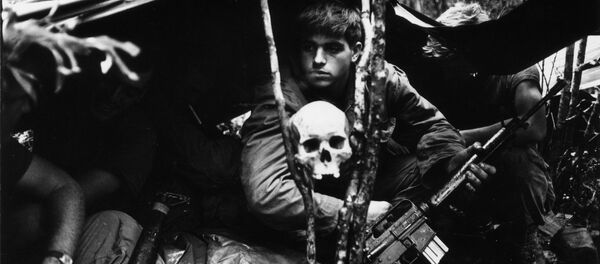"One of the things we [the US Army] are going to do … is train, advise, and assist other nation's armies so that they can protect themselves and maintain the stability of their own countries," Gen. Mark A. Milley, chief of staff of the US Army, said recently. The problem is they cannot.
Take Afghanistan or Iraq, for instance.
The US-trained Iraqi Armed Forces number more than 270,000 soldiers. In early June 2014, approximately 1,000 Islamic State fighters launched an offensive on the second largest Iraqi city of Mosul putting some 10,000 Iraqi security forces to flight. The former literally dropped their weapons and ran away.
We trained Iraqi army for 8?yr. They run away from 400 ISIS abandoning millions in US equipment. We are truly governed by incompetents.
— rubicon59 (@rubicon59) 4 октября 2015
Iraq's security situation is quite similar to that of Afghanistan.
The 200,000-strong Afghan Armed Forces, trained by the US, have been unable to defend the country from the Taliban after the United States withdrawal. In late September, the insurgent group shocked Kabul-led forces when it overran Kunduz, the capital of a province of the same name. Although Taliban fighters were forced out of the city, questions remain whether the US-trained Afghan forces are capable of containing resurgent militants let alone destroy them.
Afghan National Army of 350,000 soldiers trained in 13 years with $65 billions by #USA,500 Talibans in#Kunduz made them run away @defencepk
— Times of lsIamabad (@TheTOI_com_pk) 4 октября 2015
In Syria, the US offered training to a limited number of so-called moderate rebels. In theory, Washington wanted to create a rebel army with thousands of soldiers. The $500 million program, however, produced fewer than a hundred and ultimately resulted in "four or five" fighters on the ground. Most of the rest joined radical groups, like ISIL and al-Nusra Front, the al-Qaeda offshoot in Syria, or were killed.

Other telling examples include Indonesia in early 1990s or Mali in 2010s, where US-trained local forces were responsible for indiscriminate killings.
"US military aid looks much better on paper than in practice, in large part because it is often delivered as if on autopilot without a reasoned discussion of its merits. The State Department largely offers rubber-stamp approvals, and the Foreign Service currently lacks personnel with the expertise needed to engage in a rigorous debate with the Pentagon about who deserves aid and why," John Norris noted in an opinion piece titled "Is America Training Too Many Foreign Armies?"
Milley made his comments while in Ukraine. The US general visited the Yavoriv training center where approximately 300 paratroopers from the US Army's 173rd Airborne Brigade train Ukraine's National Guard as part of the Fearless Guardian mission. The US plans to expand the mission to include six squadrons of the Ukrainian Armed Forces.
Delighted to join US Army chief of staff @GENMarkMilley to visit @173rdAbnBde #FearlessGuardian training in #Yavoriv pic.twitter.com/4dh5y6kIFX
— Geoffrey Pyatt (@GeoffPyatt) 30 октября 2015
If history is any indication, Ukrainian soldiers might end up being well-trained and well-equipped but incapable of fighting, like many of their peers in Iraq or Afghanistan.



